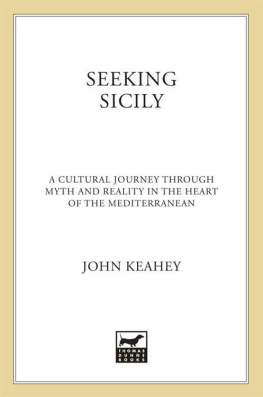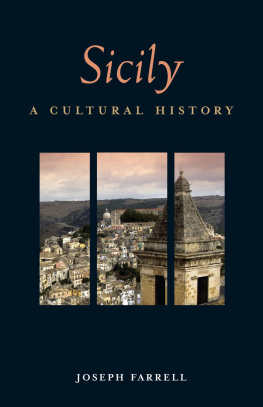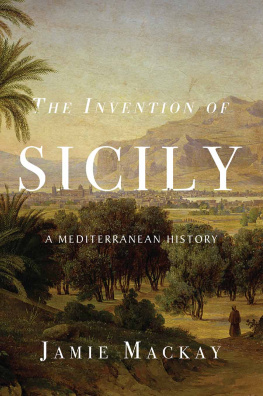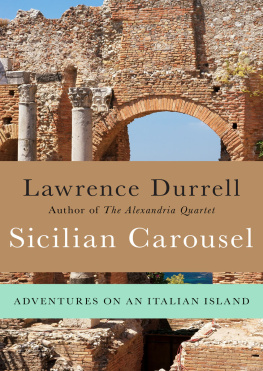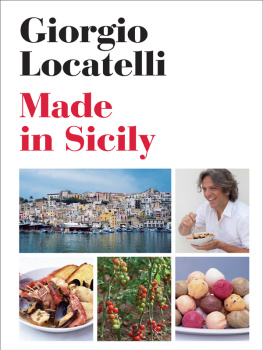John Keahey - Seeking Sicily: A Cultural Journey Through Myth and Reality in the Heart of the Mediterranean
Here you can read online John Keahey - Seeking Sicily: A Cultural Journey Through Myth and Reality in the Heart of the Mediterranean full text of the book (entire story) in english for free. Download pdf and epub, get meaning, cover and reviews about this ebook. year: 2011, publisher: Thomas Dunne Books, genre: Detective and thriller. Description of the work, (preface) as well as reviews are available. Best literature library LitArk.com created for fans of good reading and offers a wide selection of genres:
Romance novel
Science fiction
Adventure
Detective
Science
History
Home and family
Prose
Art
Politics
Computer
Non-fiction
Religion
Business
Children
Humor
Choose a favorite category and find really read worthwhile books. Enjoy immersion in the world of imagination, feel the emotions of the characters or learn something new for yourself, make an fascinating discovery.
- Book:Seeking Sicily: A Cultural Journey Through Myth and Reality in the Heart of the Mediterranean
- Author:
- Publisher:Thomas Dunne Books
- Genre:
- Year:2011
- Rating:4 / 5
- Favourites:Add to favourites
- Your mark:
Seeking Sicily: A Cultural Journey Through Myth and Reality in the Heart of the Mediterranean: summary, description and annotation
We offer to read an annotation, description, summary or preface (depends on what the author of the book "Seeking Sicily: A Cultural Journey Through Myth and Reality in the Heart of the Mediterranean" wrote himself). If you haven't found the necessary information about the book — write in the comments, we will try to find it.
Keaheys exploration of this misunderstood island offers a much-needed look at a much-maligned land.Paul Paolicelli, author of Under the Southern Sun
Sicily is the Mediterraneans largest and most mysterious island. Its people, for three thousand years under the thumb of one invader after another, hold tightly onto a culture so unique that they remain emotionally and culturally distinct, viewing themselves first as Sicilians, not Italians. Many of these islanders, carrying considerable DNA from Arab and Muslim ancestors who ruled for 250 years and integrated vast numbers of settlers from the continent just ninety miles to the south, say proudly that Sicily is located north of Africa, not south of Italy.
Seeking Sicily explores what lies behind the soul of the islands inhabitants. It touches on history, archaeology, food, the Mafia, and politics and looks to nineteenth- and twentieth-century Sicilian authors to plumb the islanders so-called Sicilitudine. This culture apart is best exemplified by the writings of one of Sicilys greatest writers, Leonardo Sciascia. Seeking Sicily also looks to contemporary Sicilians who have never shaken off the influences of their forbearers, who believed in the ancient gods and goddesses.
Author John Keahey is not content to let images from the islands overly touristed villages carry the story. Starting in Palermo, he journeyed to such places as Arab-founded Scopello on the west coast, the Greek ruins of Selinunte on the southwest, and Sciascias ancestral village of Racalmuto in the south, where he experienced unique, local festivals. He spent Easter Week in Enna at the islands center, witnessing surreal processions that date back to Spanish rule. And he learned about Sicilian cuisine in Spanish Baroque Noto and Greek Siracusa in the southeast, and met elderly, retired fishermen in the tiny east-coast fishing village of Aci Trezza, home of the mythical Cyclops and immortalized by Luchino Viscontis mid-1940s film masterpiece, La terra trema. He walked near the summit of Etna, Europes largest and most active volcano, studied the mountains role in creating this island, and looked out over the expanse of the Ionian Sea, marveling at the three millennia of myths and history that forged Sicily into what it is today.
John Keahey: author's other books
Who wrote Seeking Sicily: A Cultural Journey Through Myth and Reality in the Heart of the Mediterranean? Find out the surname, the name of the author of the book and a list of all author's works by series.

